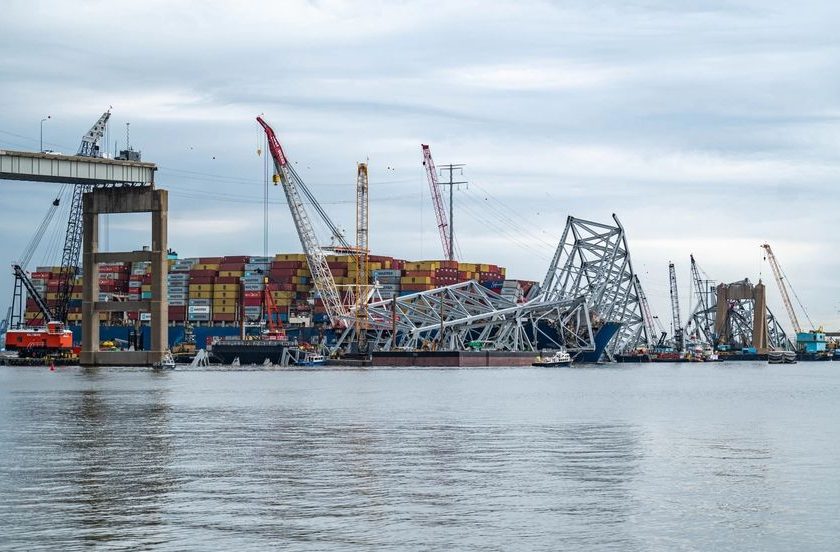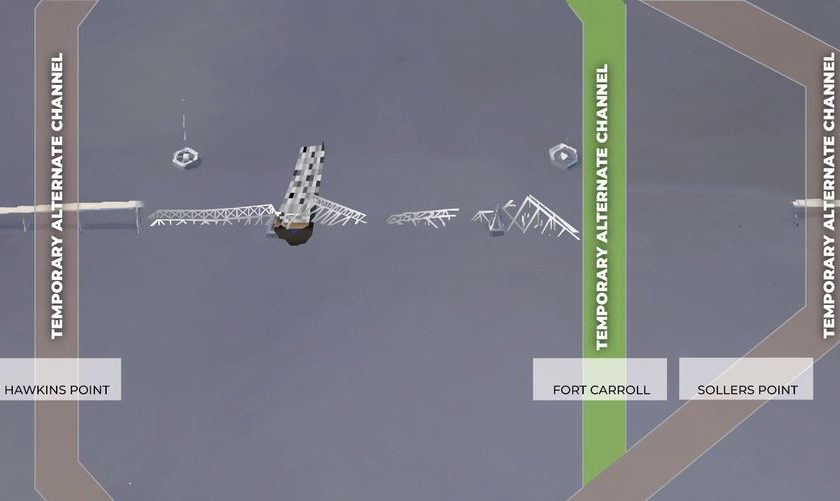1st container ship docks at Baltimore’s Seagirt Terminal since bridge collapse
NewsContainer ships have begun calling at Baltimore’s terminals, one month since the suspension of vessel traffic at the port following the Key bridge collapse.
A third alternate channel has been established near the Francis Scott Key Bridge, estimated to accommodate approximately 15% of pre-collapse commercial activity.

The Unified Command, overseeing the Key Bridge Response 2024 initiative, has established a third temporary channel in Baltimore, Maryland.
Named the Fort Carroll Temporary Alternate Channel, the new route is located on the northeast side of the main channel near the Francis Scott Key Bridge, and it is designed to accommodate limited access for commercially essential vessels.
The channel has a controlling depth of 20 feet (6.09 meters), a 300-foot horizontal clearance, and a vertical clearance of 135 feet, which is slightly deeper than the first two alternative routes. This is expected to bring transit estimates to approximately 15% of pre-collapse commercial activity.
That being said, ultra-large container ships typically require channels with a depth of at least 50 feet (15.24 meters) to accommodate their draft, and for 24,000 TEU ships, this further extends to channel depths of around 18 meters or more. As such, the arrival of large containerships to Baltimore is likely to wait for another month, as U.S. Army Corps of Engineers (USACE) aims to reopen the channel fully by the end of May.

“This additional channel increases the types of vessels able to transit inbound and outbound the port of Baltimore,” said U.S. Coast Guard Capt. David O’Connell, Captain of the Port and Federal On-Scene Coordinator, Key Bridge Response 2024. “We estimate facilitating approximately 15 percent of pre-collapse commercial activity.”
“Everyday, members of the Key Bridge Response Unified Command are working tirelessly to complete the steps necessary to support full access to the Fort McHenry channel,” said O’Connell. “The opening of this third channel represents continuous progress towards this overarching objective.”
The command is utilizing simulation resources from the U.S. Army Engineer Research and Development Center’s (ERDC) Coastal and Hydraulics Laboratory (CHL) to test shipping runs around the Key Bridge accident site. This virtual tool enables pilots to simulate various ship types and sizes and analyze their response to environmental forces such as wind, waves, and other vessels. With two simulators available, the Unified Command can evaluate changes to the environment and site designs concurrently. Initial findings from the simulations are positive, providing insights into optimal buoy placement and confirming the viability of the bypass channel, USACE said.
Meanwhile, efforts remain underway to remove pieces of the collapsed bridge from the MV Dalia containership. USACE is using the crane barge Chesapeake 1000 to move large sections of the bridge.
In this 6x speed timelapse from Friday afternoon, Unified Command salvors use the crane barge Chesapeake 1000 to move a large piece of supporting steel at the #FSKBridge site. 🏗️ Wreckage removal is ongoing to safely and efficiently open the Fort McHenry channel. pic.twitter.com/SC6AUVv8Ts
— USACE Baltimore (@USACEBaltimore) April 20, 2024
Singapore-based Grace Ocean, owner of the vessel Dali, has declared general average due to anticipated high extraordinary costs from salvage operations. Additionally, the company has filed in the District Court in Baltimore to limit its liability to the value of the vessel in anticipation of civil lawsuits.
However, last week Baltimore Mayor Brandon M. Scott announced the city’s decision to pursue legal action against the owner, charterer, manager/operator, manufacturer, and other parties involved with the M/V Dali.
By subscribing you will have: